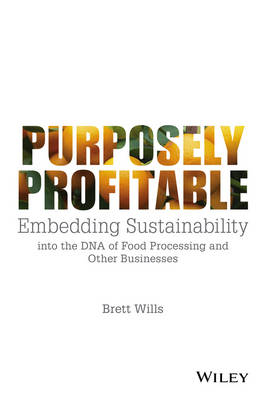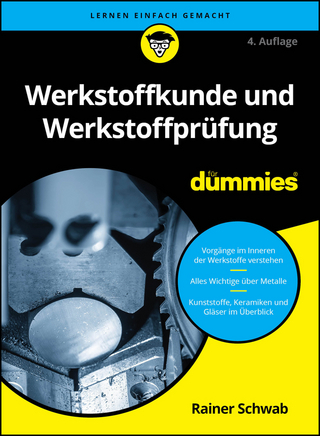
Purposely Profitable
Wiley-Blackwell (Verlag)
978-1-118-97815-3 (ISBN)
Competing and winning in today�s competitive marketplace requires a strategy that includes sustainability. Business leaders who embrace it and convey a strong sense of purpose behind their strategy are propelling their organizations into revenue-increasing, cost-reducing outcomes.
Purposely Profitable: Embedding Sustainability into the DNA of Food Processing and other Businesses provides a proven, step-by-step methodology for integrating sustainability into the strategic plan to develop a strategy that is sustainable and aligned to a greater purpose. This book notably includes the following:
A primer on Sustainability that defines Sustainable Business and presents the Business Case for Sustainability
What is an organizational purpose and why is it so important in today�s competitive marketplace
Step by step instructions, supported by a case study, for developing each component of the strategic plan (Purpose, Vision, Strategic Pillars, KPI�s, Goals, Programs Action Plans, and Tactical Execution)
A suite of tools and resources to support the development and execution of the strategic plan
Scientists and managers in the global food supply chain, sustainability professionals, researchers, students, regulators, executives and business owners will come to learn and understand a powerful system for developing a strategy that is sustainable in order to maximize organizational performance.
BRETT WILLS is President, Green Enterprise Movement Inc.; Director Sustainability, HPS Inc.; and Professor, Seneca College, Toronto, Canada.
About the Author, x
Sustainability Primer, xi
Understanding sustainability, xi
The sustainable organization, xiv
Business case for sustainability, xxii
Introduction – Setting the Stage, xxvi
Chapter 1 Finding Purpose, 1
1.1 Why a purpose?, 3
1.2 Finding purpose and developing a purpose statement, 4
Step 1: Articulating the purpose, 5
Step 2: Crafting a purpose statement, 6
Step 3: Finalizing the purpose statement, 7
Chapter 2 Creating a Shared Vision of the Future, 9
2.1 Crafting a meaningful vision statement, 11
Step 1: Setting the stage, 11
Step 2: Key word development, 12
Step 3: Key word grouping, 13
Step 4: Key word identification, 13
Step 5: Drafting a vision statement, 13
Step 6: Finalizing the vision statement, 14
2.2 Creating a shared vision, 14
2.2.1 Painting a clear picture of the future state, 15
2.2.2 Aligning daily activities to the vision, 16
Chapter 3 Getting Focused – Pillar Development, 18
3.1 The power of pillars, 19
3.1.1 Providing clear direction and focus, 19
3.1.2 Creating a culture of Sustainability, 21
3.2 Building the pillars, 22
Step 1: Pillar identification, 22
Step 2: Integrating Sustainability into the pillars, 25
Step 3: Pillar key word development, 32
Step 4: Key word grouping, 35
Step 5: Developing pillar mission statements, 36
3.3 Visually illustrating the pillars, 38
Chapter 4 Financial Objectives, 41
4.1 Understanding business objectives, 42
4.2 Setting business objectives, 44
4.2.1 Setting a Revenue objective, 45
4.2.2 Setting a Gross Margin objective, 46
4.2.3 Setting an Overhead objective, 48
Chapter 5 Measuring What Matters – KPI Development, 51
5.1 Understanding KPIs and metrics, 52
5.1.1 Leading vs lagging, 53
5.1.2 Absolute vs normalized measures, 54
5.2 Pillar KPI development, 55
Step 1: Identify what needs to be measured, 56
Step 2: Identifying KPIs vs metrics, 58
Step 3: Defining the KPI number, 62
Step 4: Building the baselines, 64
5.3 Building a dashboard, 66
Chapter 6 Setting Expectations – KPI Goal Development, 69
External benchmarking, 73
Internal benchmarking, 74
Opportunity based benchmarking, 74
6.1 Pillar goal development, 75
Step 1: Choose goal‐setting approach, 75
Step 2: Setting a commitment level (goal), 79
Step 3: Setting milestones, 83
Step 4: Assigning ownership, 86
Chapter 7 Adding Value – Program Development, 89
7.1 Program development, 92
Step 1: Gap analysis, 92
Step 2: Pareto analysis, 93
Step 3: Program identification, 94
Step 4: Program metric development, 96
Step 5: Program goal development, 97
Step 6: Action plan development, 99
Chapter 8 Getting Tactical – Strategy Execution, 102
8.1 Communicating the strategic plan, 103
8.1.1 Purpose, 104
8.1.2 Pillars, 106
8.1.3 KPIs, 107
8.1.4 Goals (aka Commitments), 107
8.1.5 Programs, 108
8.2 Cascading the strategic plan, 108
8.3 Building accountability, 109
8.4 Managing strategy execution, 112
8.4.1 Building the right team, 114
8.4.2 Being disciplined, 115
8.4.3 Locking in the gains, 116
8.5 Leveraging technology, 117
Final Thoughts: Making the Leap, 119
Tools and Resources, 126
References, 140
Index, 141
| Erscheinungsdatum | 01.05.2016 |
|---|---|
| Verlagsort | Hoboken |
| Sprache | englisch |
| Maße | 155 x 229 mm |
| Gewicht | 304 g |
| Themenwelt | Naturwissenschaften ► Chemie |
| Technik ► Lebensmitteltechnologie | |
| Weitere Fachgebiete ► Land- / Forstwirtschaft / Fischerei | |
| ISBN-10 | 1-118-97815-3 / 1118978153 |
| ISBN-13 | 978-1-118-97815-3 / 9781118978153 |
| Zustand | Neuware |
| Haben Sie eine Frage zum Produkt? |
aus dem Bereich


